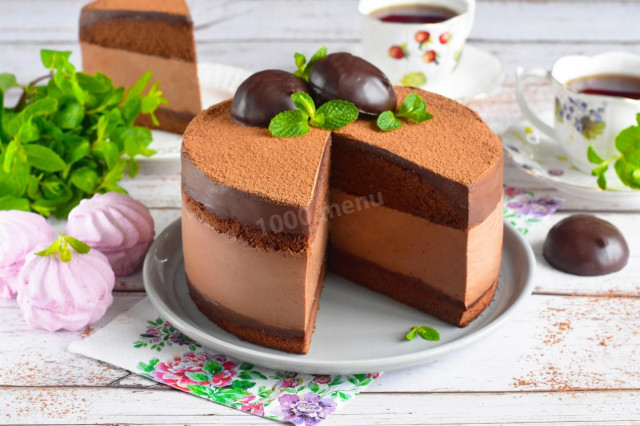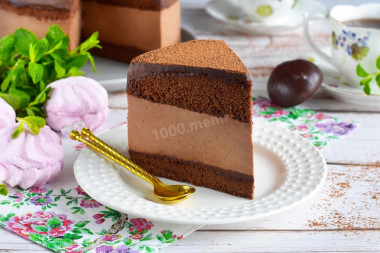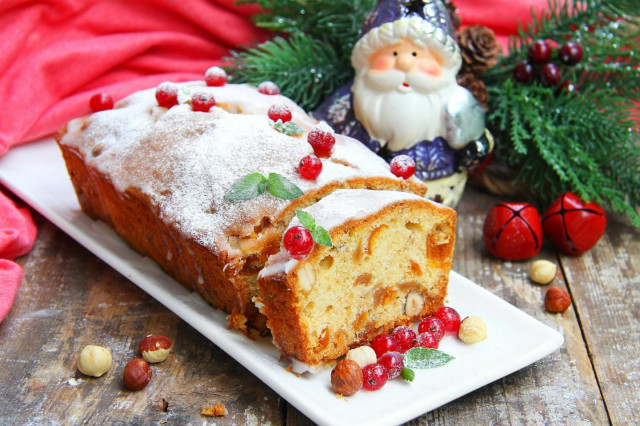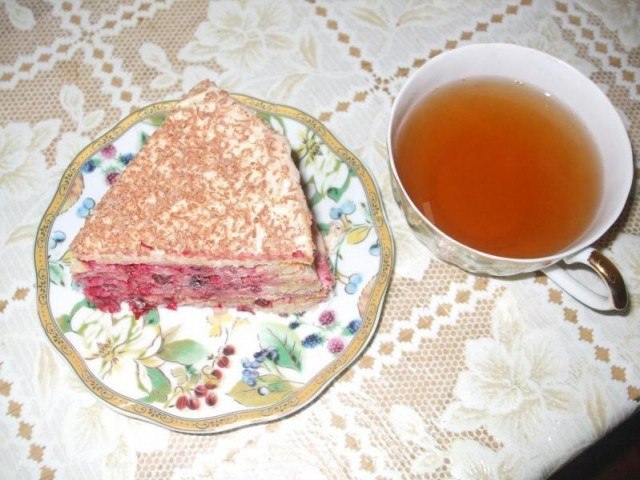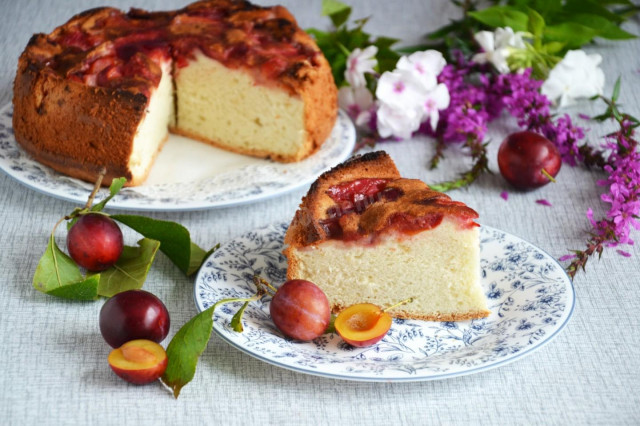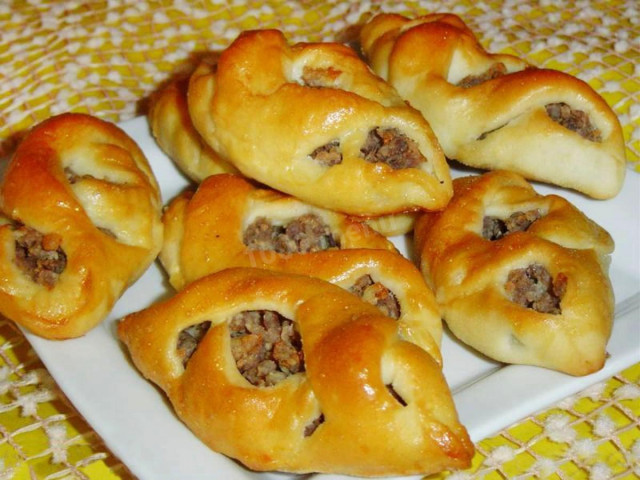Composition / ingredients
Step-by-step cooking
Step 1:
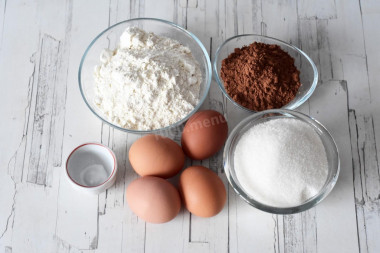
How to make chocolate mousse sponge cake? First, prepare the necessary ingredients. Take the flour of the highest grade. The eggs are large and selected. If the eggs are small, take 5 pieces.
Step 2:
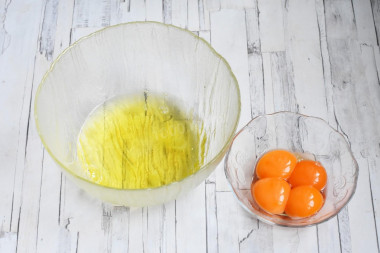
Divide the eggs into yolks and whites, trying not to get a drop of yolk into the whites. Proteins should be cold. The dishes in which the whites will be whipped should be clean, without water droplets. If any of these conditions are violated, the proteins will not climb into the foam.
Step 3:
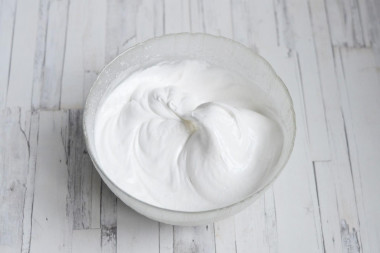
Whisk the whites with a mixer into a fluffy, persistent foam. The trace from the whisk of properly whipped proteins should be preserved.
Step 4:
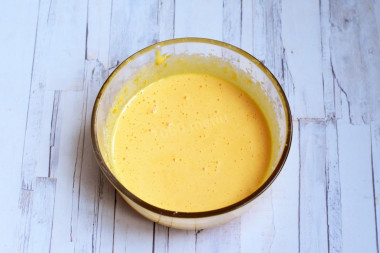
Whisk the yolks with the remaining sugar and vanilla.
Step 5:
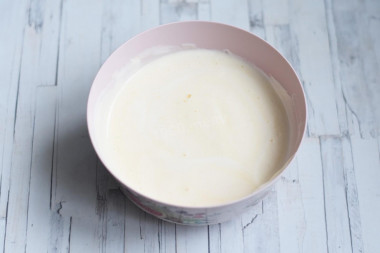
Gently mix the whites to the yolks. It is better to mix with a spatula, since the mixer can precipitate the dough.
Step 6:
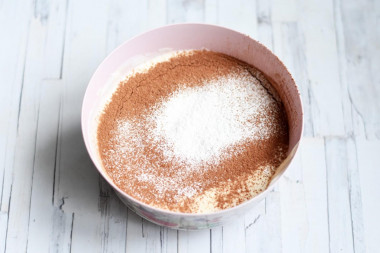
Sift the flour with cocoa and add parts to the egg mixture.
Step 7:
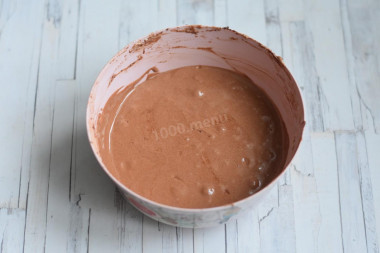
Mix with a spatula until smooth.
Step 8:
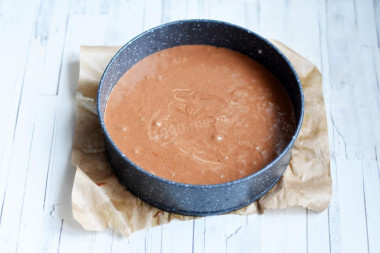
Put the dough in a mold (Ø 20 cm) and bake for about 40 minutes at 180 ° C. The exact baking time depends on your oven.
Step 9:

Cool the sponge cake and cut it lengthwise into 2 cakes.
Step 10:
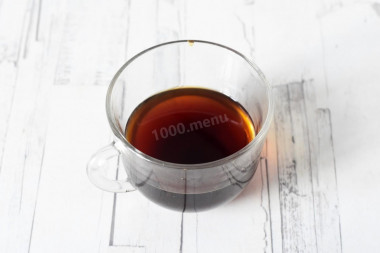
Strong sweet coffee (with milk), coffee or chocolate liqueur is suitable for impregnation. I have sweet strong coffee.
Step 11:
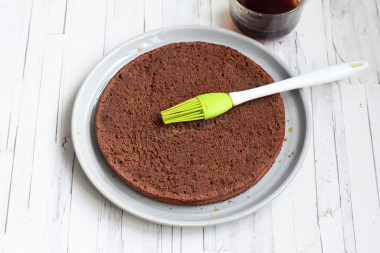
Soak the cakes with sweet coffee.
Step 12:
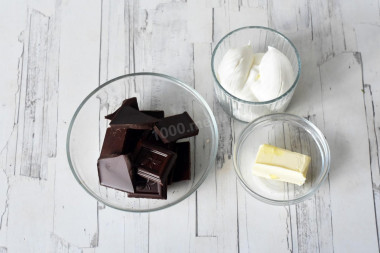
Next, prepare the ganache.
Step 13:
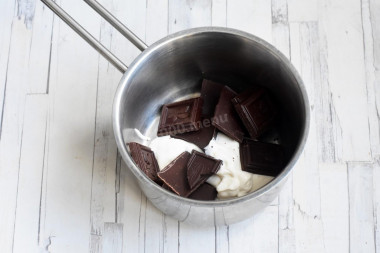
In a water bath or in a microwave, heat the cream together with the chocolate broken into pieces.
Step 14:
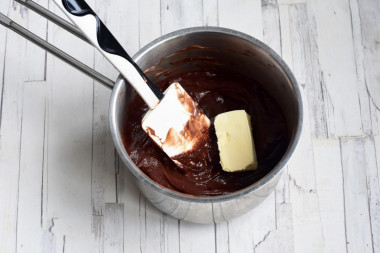
Stir the chocolate mixture until smooth. Add the butter and mix.
Step 15:
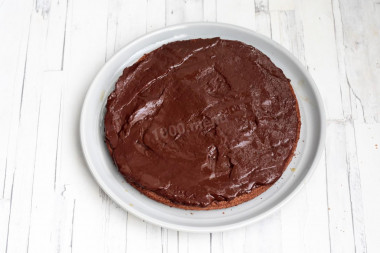
Place the first cake on the dish. Spread half of the ganache evenly. Around the cake, place a high culinary ring lined on the sides with acetate film or oiled parchment (see video). Put the cake in the refrigerator until the ganache hardens.
Step 16:

Prepare the ingredients for the chocolate mousse.
Step 17:

Soak gelatin in 50 ml of water. Then dissolve the swollen gelatin over low heat and cool slightly.
Step 18:
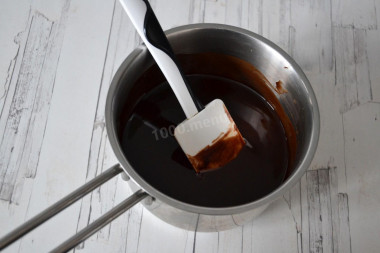
Melt the chocolate.
Step 19:

Combine cream, sour cream and some powdered sugar. Whisk until thickened.
Step 20:
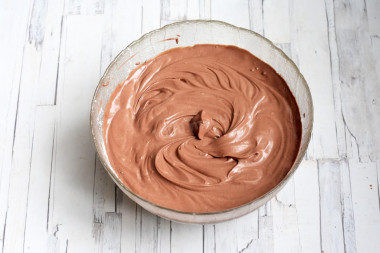
Add the melted chocolate and the remaining sugar and whisk at low speed until smooth.
Step 21:
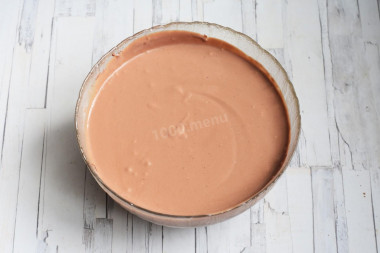
Mix the gelatin into the creamy mass. A homogeneous fluid mixture should be obtained, which will subsequently thicken.
Step 22:
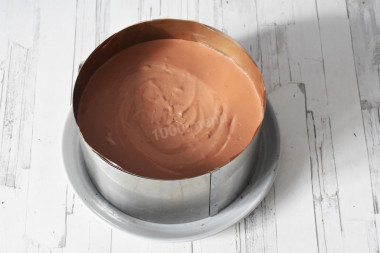
Pour the mousse over the frozen ganache and smooth it out. To make the mousse grab, put the cake in the refrigerator for 10 minutes.
Step 23:
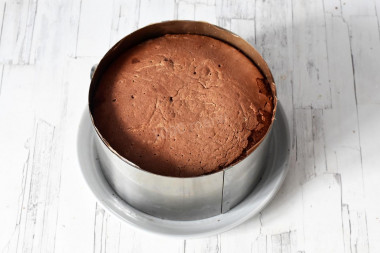
Put the second cake on top. Put it in the refrigerator for 30 minutes.
Step 24:
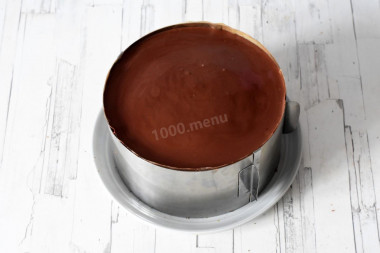
Heat the remaining chocolate ganache, stirring, slightly. To make the mass more fluid, add 1-2 tablespoons of cream. Pour the ganache on the cake. Return the cake to the refrigerator until all layers have solidified.
Step 25:
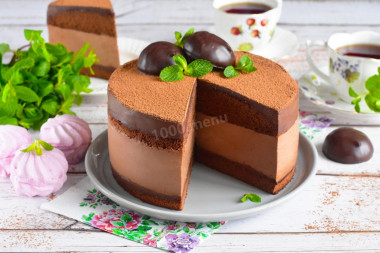
Remove the cooking ring, remove the film. Transfer the cake to a platter. Enjoy your meal!
Be prepared for the fact that flour may need more or less than indicated in the recipe. Focus not on the amount of flour, but on the desired consistency of the dough. To avoid mistakes, read about flour and its properties!
Keep in mind that everyone's ovens are different. The temperature and cooking time may differ from those specified in the recipe. To make any baked dish successful, use useful information about the features of ovens !
Why gelatin hardens badly, how to avoid unpleasant gelatin lumps in the dish, as well as all the secrets and subtleties of cooking read in the article about gelatin .
Caloric content of the products possible in the composition of the dish
- Sour cream with 30% fat content - 340 kcal/100g
- Sour cream of 25% fat content - 284 kcal/100g
- Sour cream with 20% fat content - 210 kcal/100g
- Sour cream of 10% fat content - 115 kcal/100g
- Sour cream - 210 kcal/100g
- Chicken egg - 157 kcal/100g
- Egg white - 45 kcal/100g
- Egg powder - 542 kcal/100g
- Egg yolk - 352 kcal/100g
- Ostrich egg - 118 kcal/100g
- Milk-nut chocolate - 542 kcal/100g
- Nutty chocolate - 580 kcal/100g
- Porous milk chocolate - 506 kcal/100g
- Creamy chocolate - 560 kcal/100g
- Chocolate - 550 kcal/100g
- Whole durum wheat flour fortified - 333 kcal/100g
- Whole durum wheat flour universal - 364 kcal/100g
- Flour krupchatka - 348 kcal/100g
- Flour - 325 kcal/100g
- Granulated sugar - 398 kcal/100g
- Sugar - 398 kcal/100g
- Butter 82% - 734 kcal/100g
- Amateur unsalted butter - 709 kcal/100g
- Unsalted peasant butter - 661 kcal/100g
- Peasant salted butter - 652 kcal/100g
- Melted butter - 869 kcal/100g
- Cocoa powder - 374 kcal/100g
- Gelatin - 355 kcal/100g
- Natural coffee, ground - 201 kcal/100g
- Coffee - 94 kcal/100g
- Water - 0 kcal/100g
- Cream 35% - 337 kcal/100g
- Cream 40% - 362 kcal/100g
- Vanillin - 288 kcal/100g
- Powdered sugar - 374 kcal/100g

